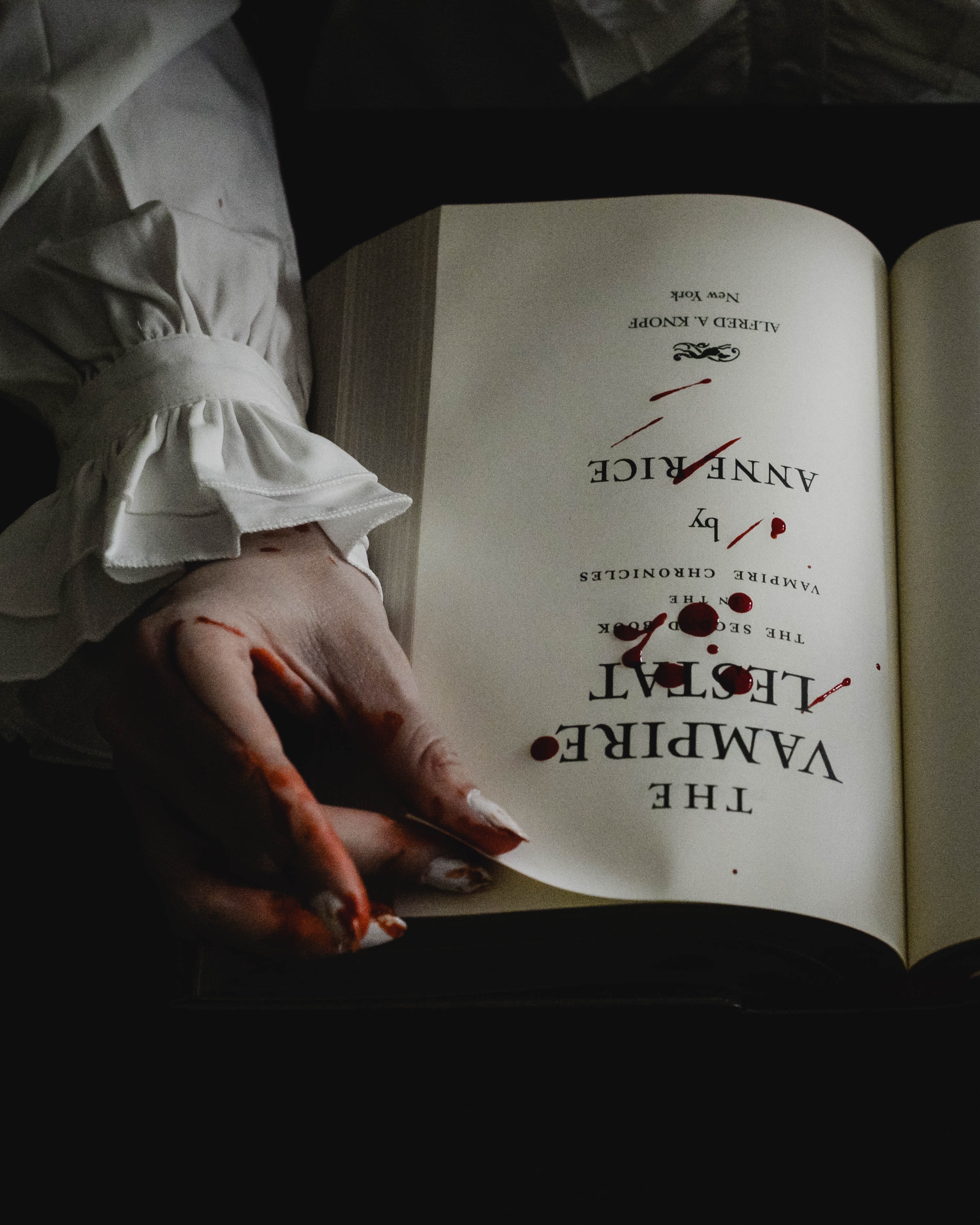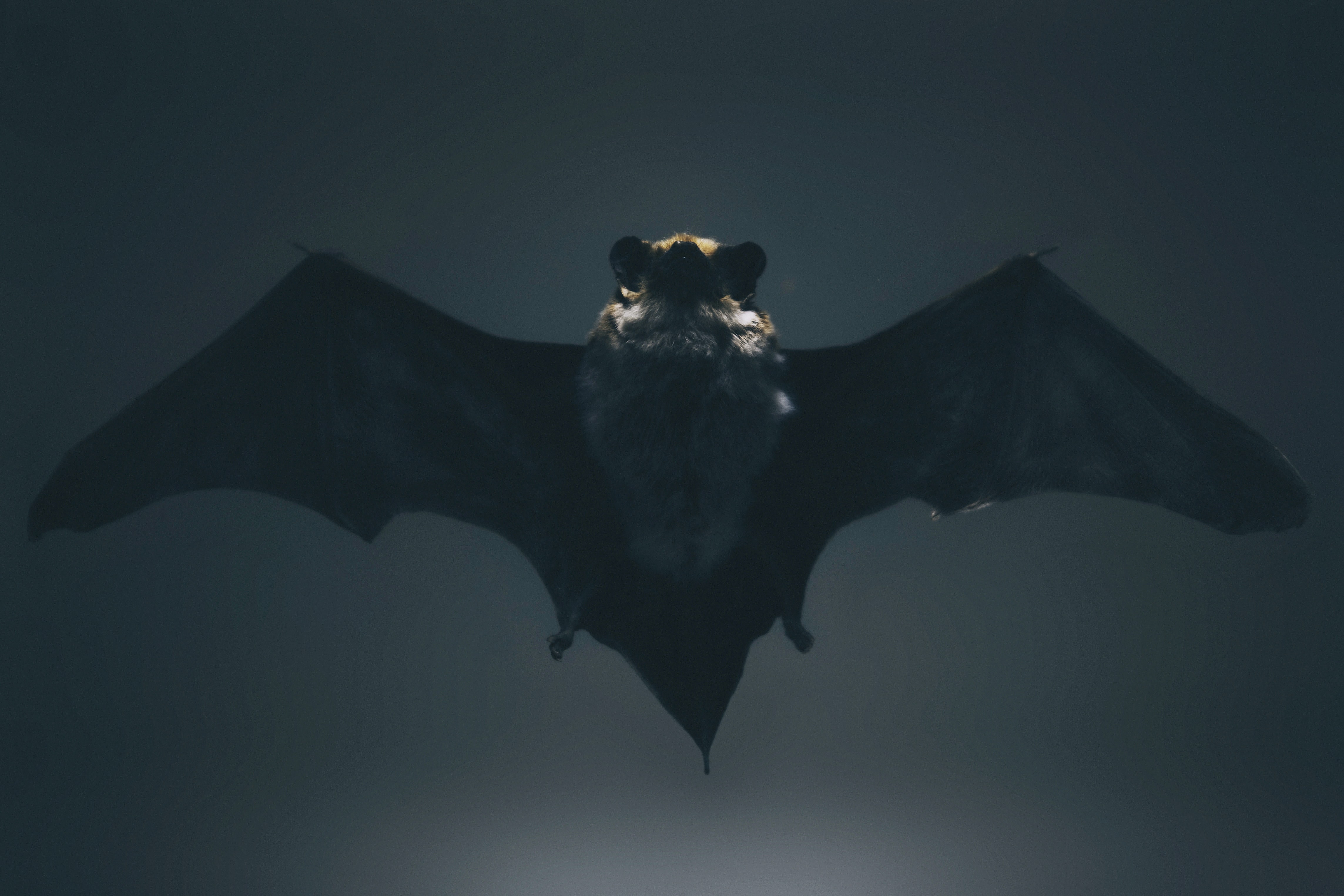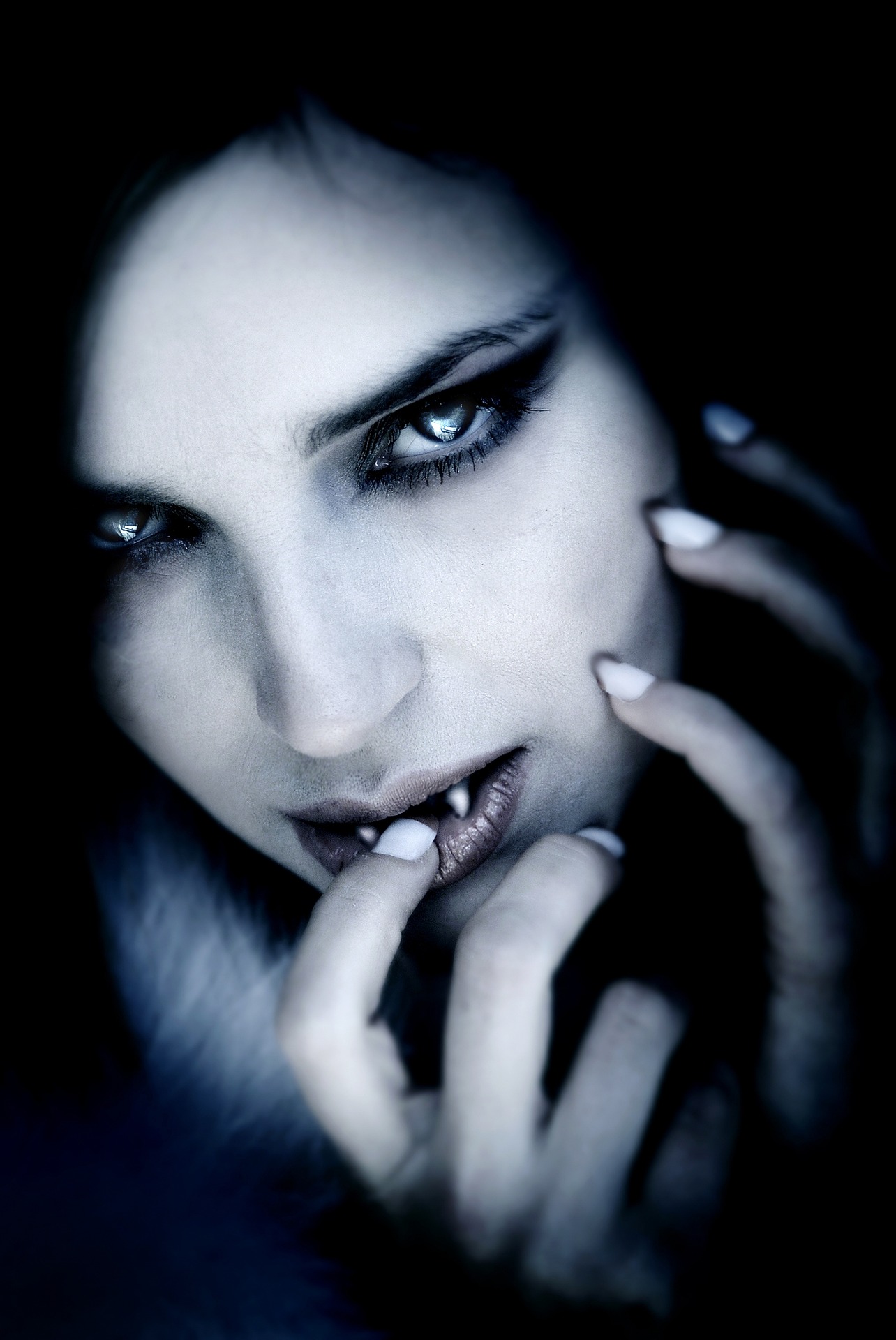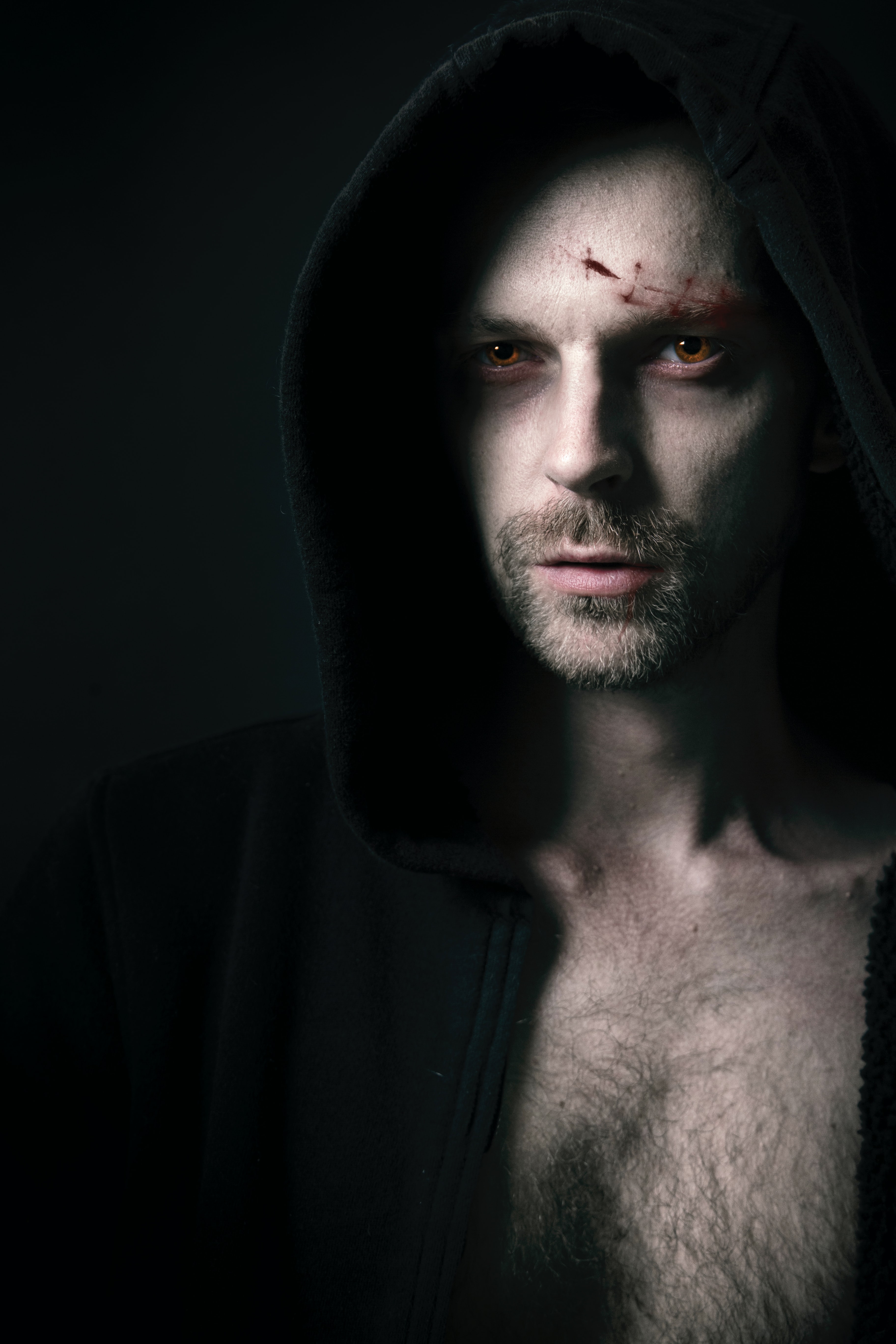Sanguine Sippers-Vampires and Science
(Fun fantasy intro hidden in the blog!)
My relationship with vampires in fiction has been a fascinating case study of someone trying to redefine their relationship with literature.
See, I grew up watching the vampires depicted in cartoons like Scooby-doo and Looney Tunes. They were always harmless, a ridiculous combination of a bat and a human that, while apt at chasing their victims, was easily defeated with a simple clove of garlic, a cross, and a timely ray of sun.
That is, until middle school.

Prior to that point, my school reading had been restricted by a program called Accelerated Reader, which always put me at a reading level at least two grades below my current grade. As to why that is requires a dissection of the poor design of this program, but regardless, I was always locked into reading the “child level” books. When I finally entered my first year of middle school, I finally convinced my English Teacher to allow me to read at unrestricted grade levels so I could finally read a decent story.
I need to also preface that during this time, “Twilight” by Stephenie Meyers was becoming a cultural hit among my peers. I could have joined in this cultural phenomenon fawning over hot-boy vampires, but my chains had finally been shattered. Was I to finally gain my bibliographical freedom, only to be tethered to the reading trends of society?
“Nay,” said I. In an act of true teenage rebellion, I reached for Bram Stocker’s “Dracula.”
(Because that’s totally how regular teenagers rebel, by reading a different book about vampires.)
I was sucked into the pages, latched onto the story’s carotid artery, and chugged down every last drop of Bram’s words. The suspense, the horrifying revelations, the cat-and-mouse game between Van Helsing and Dracula, all of it quenching me. I had a craving for gothic horror. As I lapped up the last moments of the story, I felt invigorated for more vampire stories.
Imagine my shock when I attempted to read “Twilight” immediately after my addictive experience with “Dracula.” I remember reading a portion of the book in front of Twilight fans, rolling my eyes, and saying, “They sparkle? Seriously?”
(Hey, if you like Twilight, power to you! But very hard to read right after digesting the original vampire novel, where one kept me up at night, and other had a romance I could not get into)
Quick Notes Before We Build This Vampire
Some aspects of vampire lore has already been discussed in previous blog posts such as how longevity or night vision work. Check those out for some key features of our vamp!
I think it’s also key to point out that our vampires are not shapeshifters. Bram Stoker’s Dracula could change into a bat or wolf (which does beg the question why werewolves are rivals of vampires), and most modern depictions of our creature have vampires changing into bats. That’s not so say that they certainly couldn’t “blend into” human societies, thus giving them the reputation of “shapeshifting,” but we’re not having them alter their skeletal structure and species.
Maybe we’ll revisit the shapeshifting topic and make an addendum to this post, but for right now, it’s a topic outside of our homebrewed vampires.
They Be Un-Undead (And I am Dying On this Hill)
Now, most folks who have been around on this blog probably are well aware of my absolute distaste for the undead.
This distaste extends to this blog post as well.
For the purposes of this blog, vampires are not undead. I’m sorry, but the mental backflips I need to do to see how a corpse can move and requires nutrients for a metabolism that doesn’t work are just too much. I’m sorry, but I am putting my imaginary foot down and harumphing a defiant “No!”
…Undead also just terrify me, okay? There. I said it. I’m a scaredy cat. It doesn’t take much to give me the “heebie-jeebies.” And I know that’s a strange sentiment due to my adoration of gothic horror, but even my love of vampires doesn’t take away my undead aversion. So, no undead!
I also don’t really see vampires as undead creatures, if that makes sense. Even knowing their lore, I’ve always seen them in fiction as more apex-predators in a fantasy world. Hard to take down, but not unkillable.
That doesn’t mean that they can’t have undead-like characteristics, as we’ll see later. But we need to establish vampires as living species that can reproduce like any other creature on the planet, just so we’re all on the same page!
Can Vampires Fly?

…Alas, they probably wouldn’t.
I gotta tell you: I tried so hard to find evidence that a human-like vampire could fly, but the fact is that they’d be too dang heavy.. Even if we made vampires child-sized, I doubt they’d have the muscle mass required to lift themselves off the ground. The largest flying mammal is the flying-fox bat, even they are only have a 16 inch body with a 5ft wingspan. That’s enormous for a tiny body!
So, back of the envelope calculations, if we assume the same proportions a 5ft vampire would need to fly as the flying fox… said vampire would need a wingspan of 18.8ft.
Guys, that wingspan is almost 4 of me tall. And even if you think I’m pocket sized, that’s still an insane wingspan. The longest wingspan on earth currently is the albatross at 11ft. In Prehistoric times, the longest wingspan champion was the Pelagornis at 17ft. And We’re not even taking into account that as a mammal, our 5ft vampire does not have hollow bones and would therefore need insane muscle mass to lift itself off the ground, meaning that it would be even heavier, which would require more muscles and… well, as the previous paper mentioned, it becomes biologically impossible for our little vamp to fly.
Ok, so our vampires can’t get off the ground.
But could they glide?
Humans use wingsuits to glide.
Maybe vampires would need to be slightly smaller in stature, just to take into account that their gliding membranes would be made out of skin and not synthetic plastic. But a patagium that runs from their wrists down to their waist and possibly between their legs could act like a wingsuit!
There are many mammalian examples of a patagium, but the one we’re going to give our vampire is based on the sugar glider’s gliding membrane, as they have a uniquely well-developed lateral muscle called the tibiocarpalis muscle that scientists believe provides to enhanced gliding control.
Now, would they be the world’s greatest wing suiters, diving off the face of mountains to the valley’s below to hunt their prey? Probably not. The thick membranes would be meant to allow them to jump decent distances, but not the same distances that wingsuit jumpers. Not that it’s not theoretically possible, but the speed at which a wingsuit reaches (Google says 200+mph) is hardly the easiest speed to stop at without some casualties. Wingsuit jumpers have parachutes for the last part of their descent, meaning they hit the ground at a leisurely 17mph rather than 200mph. And unless our vampires have biological parachutes stitched into their back, they won’t be surviving that kind of landing.
But the most important thing to take from all of this is that our vampires can still be “death from above.”
“My Lord, I am Too Much In the Sun!”
Hamlet reference for my literary lovers out there :)
Spoilers for Dracula, but the original vampire did not actually die in sunlight. Drac just lost his powers in the sun. So, our vampires aren’t actually required to have any sunlight aversion.
Even if a scientifically accurate vamp was meant to be anti-sun, their aversion to the daylight can be easily explained by their species being nocturnal and optimized to hunt at night. Less of a “gotta stay in the darkness for fear of death,” and more of a “not much happening when the sun is out because that’s when one sleeps” sort of deal.
But let’s think outside the box here. There has to be some ways to make sunlight a burden to a vampire.
There is a type of allergy called Solare Urticaria, which is an allergic reaction caused by exposure to UV or visible light. Exposure causes an IgE-mediated reaction in the body (remember, IgE is the antibody that is responsible for allergic reactions) that can cause a rash on the exposed skin.
This seems like an easy biological trait to add to our vampire, having a sunlight allergy within the species, but here’s the thing: you can’t inherit allergies. At least, not specific allergies. And this comes from my allergist years ago, that one cannot inherit an allergy to cats. One can, however, inherit the ability to develop an allergy. That is, you inherit the hyperreactive IgE antibodies, but as to what they will react with is entirely up to chance and what you’re exposed to.
So, we could have all vampires dealing with allergies, but not all of them would be to sunlight.
There are other cases, where treatments like cancer medications that can trigger a phototoxic reaction in UV light, leading to a rash… but that requires a chemical in conjunction with the light exposure. That would be a little hard to give biologically to our fictional vampires.
After doing a bit more discussing with the medical professionals in my family, I stumbled upon the diseases that some believe instigated tales of werewolves and vampires called porphyria. For a quick summary of what that is, porphyria is a liver disease where your body’s process in making the oxygen-carrying protein called “heme” is interrupted, leading to a build-up of porphyrins. There are various types of porphyrins, but what you need to know is that some of the symptoms can include abdominal pain, high blood pressure, high heart rate, but most importantly, light sensitivity.
See, the porphyrins hanging out in a patient’s body are reactive to light, as in they absorb light and transfer energy to the surrounding tissue. This results in tissue damage, which shows up as either a rash or blisters and swelling.
And thus, our vampires could have increased porphyrins in their body, resulting in an aversion to sunlight! This explanation just, um…(Looks at the laundry list of horrible symptoms from porphyria)… comes with a lot of other horrible side effects. I don’t think a whole species could survive if they all had porphyrins just floating around in their body due to a dysfunctional metabolic pathway.
But, if we’re willing to look past that, we have our vampire’s sunlight sensitivity!
Another One Bites the Dust

I think it goes without saying that it is not scientifically possible for a bite to change someone from one species to another. Kinda takes all the fun out of werewolves and vampires, but that’s the truth.
So, if a vampire can’t turn you into a vampire, should you still be wary of their bite?
Absolutely.
Let’s be honest: the general rule of thumb should be to never let anything or anyone bite you. Never ever.
Let’s assume that vampires, like bats, are reservoirs for viruses that can be passed between animals to humans. This article, which is discussed in more laymen terms here, found that bat species tend to carry more animal-effecting or “zoonotic” viruses than any other mammals. The theories for why bats are fantastic viral reservoirs are numerous: bats have increased body temperatures during flight which allows them higher viral tolerance, an enhanced innate immune system, (this article goes through many possible theories as they discuss their hypothesis!)
And even if our vampires aren’t exactly like bats and are like humans, human bites can hypothetically carry Hepatitis B and C, Herpes, Rabies (which would explain why they’re biting someone), and syphilis. And that’s not considering the bacteria in the human mouth that are transmitted into the bloodstream during a bite, which could lead to infection and sepsis.
Long story short: bites are nasty and potentially deadly, regardless of whether the victim turns into a vampire afterwards.
So if one of our vampires bites a victim and that victim survives, that person may have been exposed to a new deadly virus… and if COVID-19 has taught us anything, it’s that novel zootonic viruses can be devastating to a person and community. Or, we can go even simpler in our explanation and say that a person bitten by a vampire is likely to get rabies, not unlike what would happen if they were bitten by a bat or any other animal. Or said person could get a deadly bacterial infection. This article here discusses the deadly pathogens that can be passed between bat to human.
And if we want our vampiric bites to really bite, we know that vampire bats have draculin that halts thrombin formation, a key step in forming clots. That means that as long as the vampire bat is feeding, it’s food is going to keep bleeding. I think our vampires need some of this anti-coagulating venom!
A Glass of Blood For Your Health

Speaking of blood, the act of drinking blood, or hematophagy, is not unheard of in the animal kingdom. Plenty of small animals and bugs resort to drinking blood, such as mosquitos, ticks, vampire finches, leeches, lampreys, and of course, the vampire bat. Even various human cultures use blood in culinary delights, as it’s an amazing thickener.
So it follows that our vampires should be blood drinkers as well, right?
Let’s do some more back-of-the-envelope math here (to my metabolic researching friends: I apologize in advance!)
A vampire bat needs about 2 tablespoons of blood for their metabolism to work.
A quick ratio conversion from a 1.2 ounce bat to a light, 120 lbs human (1920 ounces) means that the human would need 3,200 tablespoons to survive. That calculates out to 12.5 gallons.
The human body has 1.2-1.5 gallons in it. So, to survive, our vampire would hypothetically need 10.4 humans worth of blood to survive between feedings.
This isn’t taking into account how metabolic needs actually increase with animal size, is not a linear relationship, and that our small 120 lb human would need way more than 12.5 gallons of blood to take care of everything in its larger bodies.
There are predators like the Greenland shark that can survive on a small amount of food, just 60-100g at a time, but to quote a friend of mine, “That’s in the water, and things in the water are weird.”
Long story short: our vampire cannot survive on just blood alone, even if they conserved energy between feedings by lounging and doing absolutely nothing (although this would explain a vampire’s luxurious lifestyle). And even if they did, they would need a unique way to filter out the excess iron they’d be drinking, like the vampire bat. Most of the iron in your body is in your blood, circulating around in your blood in hemoglobin and ferritin. Filtering out the excess iron from ~11 humans worth of blood would probably make the blood collection not metabolically worth it.
…Unless… our vampires were iron deficient and needed high amounts of ingested iron to function! That’d justify the blood drinking, although the 11 humans would be more than enough to overcome that deficiency, and still would be a biological hassle to filter through.
There’s also the issue about the blood collection method, or the fangs. Mammals the size of our vampires are going to be more of what we find in other primates: Long fangs that are more designed to rip into a prey or victim during a fight rather than subtly pricking a victim’s skin. So if our vampire is biting someone it’s… um… it’s not subtle. They are using their fangs to tear into their prey’s flesh, and it’s not sexy.
This is not to say that our vampires could not evolve to have super sharp and needle-thin teeth, but I’m just saying that current research says that’s not as likely.
What I’m saying is that our vampires can’t just be strictly sanguivorous. They probably can lap up blood more than most predators, and maybe snack on blood more than most, but they still need to go for other sources of calories and nutrition, like meat.
Okay, then What Makes Vampires Scary?

Let’s look at how a vampire attack would go down.
We’ve already established that our vampires have some ability to glide and have night vision. So they’re on a high vantage point in this scenario. They spot an unsuspecting prey. They prepare, crouch, and then leap. The vampire tackles their prey to the ground while also going for the throat. Say they manage to land a bit on the prey’s neck; now the vampire begins to pump anti-clotting venom into their prey’s neck. It’s during this time, the vampire can let their prey’s blood fill their mouth as they grapple their victim and wait for the struggle to stop.
Even if the prey somehow survives and manages to wriggle out of the vampire’s initial attack, the prey may just die from blood loss if they were injected with the venom and still sustained a substantial wound. The vampire just waits until their prey stops struggling. If the vampire managed to land a successful bite, they’ll drink the blood from the wound until the heart stops pumping to not waste any nutrients and to reduce the amount of blood at the scene; best not to let other prey know a vampire is on the hunt tonight. Once their game stops bleeding out, the vampire can drag the body to a safer place to eat.
It’s fast, energy efficient, and less of a hassle.
But let’s think outside the box for a moment. Our vampires could be more sub rosa, more clever in their kill(s).
Say they have unwanted visitors. Other predator. Or a human. A new farming community has infiltrated their territory. If the vampire were to just attack this infestation, the humans would overpower them with their weapons and numbers.
But humans are weak, despite their weapons. The vampire waits in hiding, perhaps in a rocky area. They lick their claws before scratching the heels of humans wandering through the area. The humans will think nothing of it, annoyed at the inconvenient breaking skin. Perhaps there are nights the humans sleep outside, and the vampire quietly bites at their ankles, just enough to break skin but not enough to wake the humans. But enough exposure to the vampire’s scratches may lead to some of the humans becoming sick. Perhaps they develop sepsis, or they develop an airborne disease that sweeps through the community. People begin to panic. Perhaps some leave out of fear, declaring the town cursed.
Perhaps a young, inexperienced vampire eagerly plays into these superstitions, making noises at night and allowing humans to feel their ankles being fondled. But these bring vampire hunters, more attention to their territory. No, the wiser vampire will simply be patient. Humans will eventually hunt down their own kind when blinded by the unknown. And soon, neighbor accuses neighbors, claim that witchcraft is poisoning their town. All the while exposing one another to viruses, refusing to properly treat the bacterial infections.
The vampire’s patience is rewarded as the pitiful community succumbs to disease, pleased that the unattended livestock is now ripe for the taking and their territory free of this brief infestation.
… Hey, it’s the spooky season! I had to do a more horror-themed explanation!
Societal Implications
I am assuming that vampires have the same level of intelligence as humans. That’s what makes them so intriguing in the first place (the vampires, I mean). Some stories do depict vampires with bestial intelligence, but I’d hold off on that. We gotta make things interesting!
In a pre-modern setting, vampires have a higher tolerance to zootonic diseases compared to humans. Perhaps they choose to take advantage of this and start to move into human towns/cities when the community begins to succumb to disease. Or perhaps they happen to wander unaffected through a town during an outbreak: wrong place at the wrong time. Vampires become “harbingers” of death as they can walk among the dead and dying without consequence. Maybe they figure out how to make vaccinations so their weak human friends/lovers can stop dying on them.
Perhaps vampires look just enough like humans that they can wander amongst their neighbors as long as they cover their gliding membranes and teeth. Or from afar, folks simply assume their membranes are cloaks and pay no mind. But when provoked, a vampire will defend themselves and their family. And they will attack with a bite, as their venom and fangs are their best natural defense.
Are our vampires social creatures, moving in groups, or do they grow up to be loners? IF they’re social, they aren’t hanging upside down with one another (vampires would be too big for their vascular system to handle hanging upside down for too long), but they most certainly would hang out in high places. Perhaps they live high in the mountains, carving out civilizations into the mountainside and using their gliding abilities to jump from one rock face to the other. Or, perhaps they are more opportunistic, moving into abandoned towers left by humans?
Do they keep their own livestock for feeding, or do they take from those of neighboring humans?
Honestly, I wouldn’t limit a vampire’s culture and territories any more than humans. The only big question would be whether vampires are openly among humans, are off doing their own thing, or hidden within the human cities, passing as just another traveler and neighbor?
Or would their existence make them the apex predators, and they rise above humans, making our “kind” their livestock and prey?
Takeaways
Welp, this was a post 2 years in the making! I’ve had this worldbuilding post since the middle of the pandemic lockdown. The only problem is that I had to write this during Halloween, and around both previous Halloweens, I was trying to survive midterms!
And while I am not a fan of the horror genre in general, I couldn’t hold back on some of my creepier lines in this post :) T’was too good to pass up right around Halloween!
Happy Hauntings, folks! Stay safe and remember: don’t bite anyone! It’ll suck otherwise, and all of your spooky fun will all be in vein!
(…I couldn’t help myself. Sorry, not sorry!)
